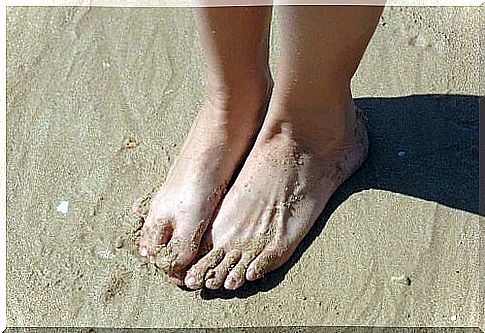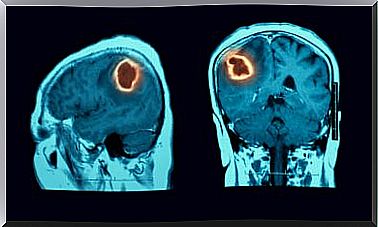Flat Feet, What Are They And How Are They Treated?
It is said that a person has flat feet when, while standing, the entire sole of the foot is in contact with the ground. That is, the foot lacks a vault or plantar arch. It is the opposite pathology to cavus feet.
It is a very common trait. It is estimated that 20% of the world population has it. It is a condition that generally does not cause pain and that can develop both in childhood and over the years.
However, it can lead to misalignment of the legs, causing problems in both the ankles and the knees. Therefore, in this article we explain why flat feet form and how to treat them.
Why do flat feet occur?
In childhood, having flat feet is normal, since the arch of the foot forms during this stage. However, in some people, the arch never develops. This doesn’t have to be bad or troublesome.
Flat feet can also develop over the years. In this case, it usually affects only one of the feet. It can occur both from aging, as well as from overuse, injury or disease. Any of these situations cause damage to the tendons, which are what support the arch.
On the other hand, there are certain factors that increase the risk of having flat feet. Among them stand out, apart from aging and injuries as we have already mentioned, obesity, diabetes and rheumatoid arthritis.

In fact, a study carried out at the University of Chile states that:
Therefore, it is important to take care of food, especially of children. Obesity can affect skeletal and muscle development.
What symptoms appear?
Most people with flat feet have no symptoms. However, some feel pain, which can appear on the inside of the leg. By causing misalignment, pain can even affect the ankle or knee.
Flat feet are associated with inward-rotated knees. This pathology is called genu valgus . It is both a skeletal and an aesthetic problem, since it can be seen with the naked eye.
In addition, other symptoms that can cause flat feet are tiredness and heaviness of the legs. It may take more effort to walk. In some cases, even the back can be affected.
What treatments are there for flat feet?
In cases of flat feet in which there is pain, there are a series of treatments that can improve the situation :
- Stretching exercises: for those cases in which the Achilles tendon is shorter than normal.
- Structurally Supported Footwear: Helps relieve pain and is more comfortable than low-support shoes.
- Orthotics – These are arch supports. Some are sold over the counter, but can also be custom designed. They are custom insoles that conform to the contour of the foot and reduce symptoms.

In the case of children, the ideal is to try to correct flat feet with certain exercises. However, from the age of 4, insoles are often used to help improve foot alignment.
Surgery can also be done. However, this is usually reserved for the more complicated cases, in those people who also have a tendon rupture, for example.
Also, in the case of athletes, physical therapy can be effective. This is because many cases of flat feet occur in overuse injuries while running or misperforming other exercises. Physical therapists and trainers can avoid this problem by helping to improve technique.
Final Recommendations
Having flat feet is something common that does not usually cause discomfort or major problems. However, in cases where it does occur, there are different forms of treatment that can help. The important thing is to go to the doctor if you have any doubts.
In addition, it is recommended to lose weight to avoid obesity. Pain can be treated with medication, although stretching exercises and physical therapy are ideal.









